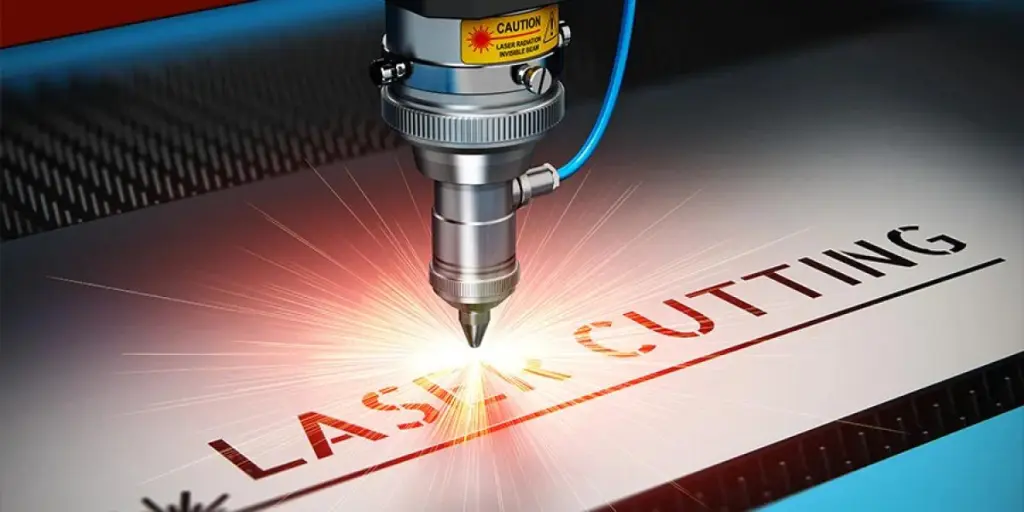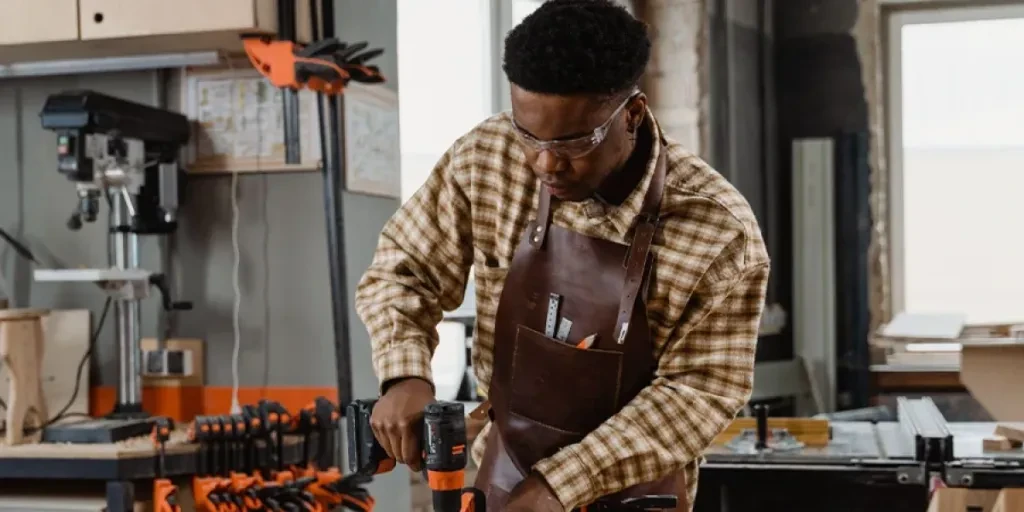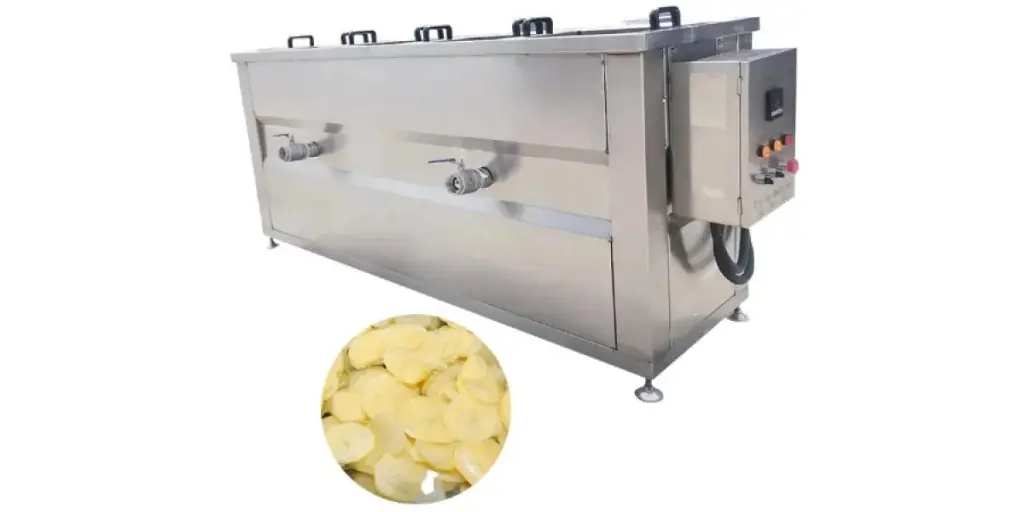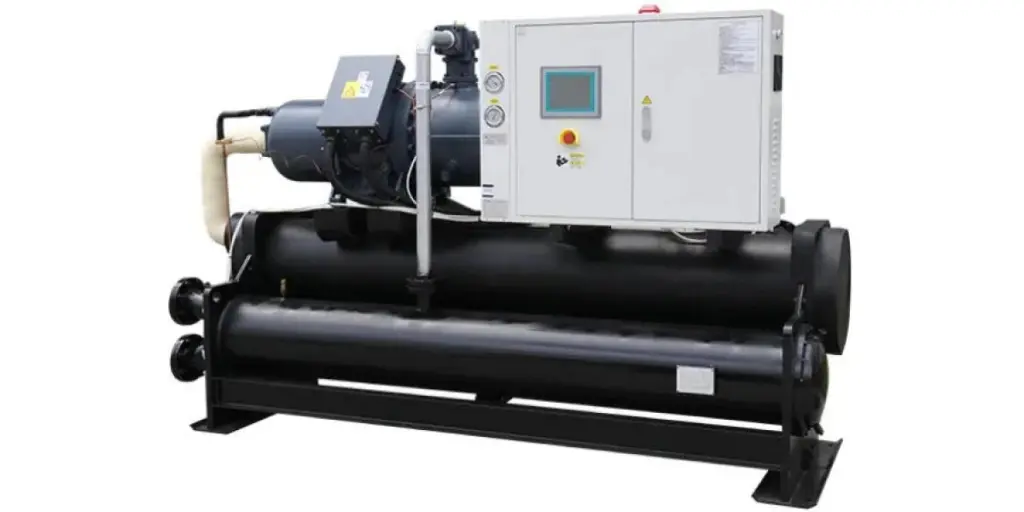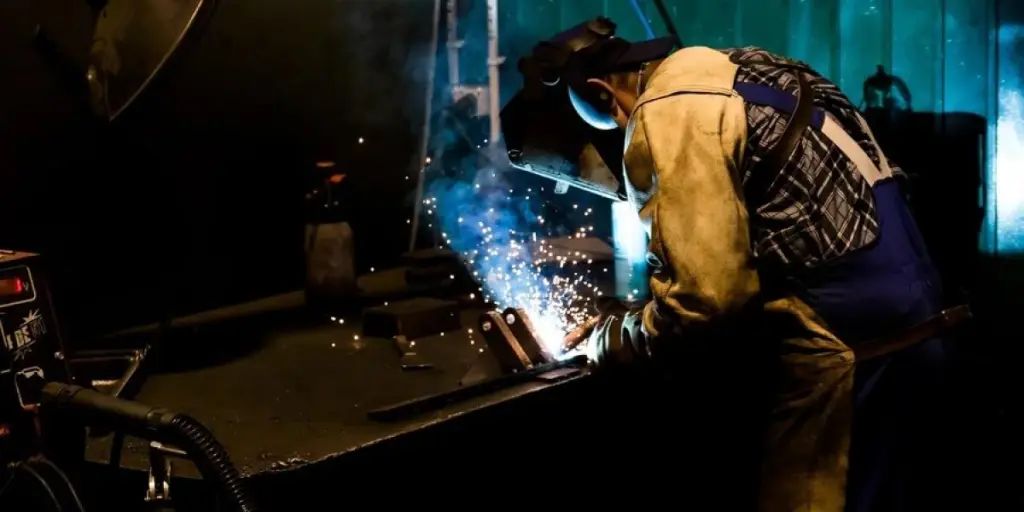Laser cutting is one of the most common practices in manufacturing. Originally intended for drilling holes in diamond dies, laser cutting has gone a long way and is now considered one of the most efficient ways to cut a piece of material and create finished products. It is a technology that is widely used for different applications from big industrial manufacturers to schools and hobbyists.
This article dives into the whole spectrum of laser cutting, including what it is and how it works, the different types, features, and applications of laser cutting, and future trends in laser cutting machinery.
What it is
Laser cutting is the process of using a high-power laser beam to irradiate material. Typically, the laser is used together with a motion control system, which determines how the laser moves over the material. Laser cutting is used not only for industrial applications such as metal fabrication, but also sometimes for artistic effects such as engraving and etching.
How it works
Lasers use energy from electrons to generate an intense, high-temperature light, otherwise called a laser beam. Upon contact with the material, the laser beam quickly melts the surface to form a hole. From the initial contact point, the laser moves in a programmed direction which either cuts the material entirely or creates the desired effect. At the same time, the melted material is blown off by a high-speed air flow.
Laser cutting is a thermal cutting method that generally produces smooth cuts with excellent quality, high accuracy, and minimal wasted material. Compared with traditional cutting methods, laser cutting creates narrower slits, which helps you save more portions of the material.
Types of laser cutting
Laser cutting can be categorized into four categories: laser vaporization, laser melting, O2 laser cutting, and laser scribing with controlled fracture.
1. Laser vaporization
Laser vaporization uses a high-energy density laser beam to heat material. Upon contact, the temperature of the material rapidly rises to its boiling point, and the material begins to vaporize into steam. As these vapors are rapidly ejected, a cut is formed in the material.
This laser cutting type requires a large amount of power and power density, and is mostly used to cut extremely thin metal materials and non-metal materials such as paper, cloth, wood, plastic, and rubber.
2. Laser melting
Laser melting uses a laser beam to heat the material rapidly and non-oxidizing gas (such as Ar, He, N, etc.) to discharge the melted material. The non-oxidizing gas is sprayed through the nozzle at a high pressure together with the beam, which allows the material to discharge instantaneously upon contact with the beam.
Laser melting does not completely vaporize the metal, and requires only 1/10ths of the energy required for laser vaporization.This type of laser cutting is mainly used to cut materials that are not easily oxidized, or active metals such as stainless steel, titanium, aluminum, and their alloys.
3. O2 laser cutting
O2 laser cutting uses a laser beam to heat the material rapidly and O2, an oxidizing gas, to discharge the melted material. In O2 laser cutting, the oxidizing gas interacts with the material to cause an oxidation reaction, which emits a large amount of heat. Then, the molten oxide and melted material are blown out from the reaction zone, resulting in a cut in the material. In this regard, O2 laser cutting is similar to oxyacetylene cutting.
Because the oxidation reaction in the cutting process generates a lot of heat, the energy required for laser oxygen cutting is only half of the energy required for laser melting, and the cutting speed is significantly higher than that of laser vaporizing and laser melting.
O2 laser cutting is mainly used for metal materials that can be easily oxidized such as carbon steel, titanium steel, and heat-treated steel.
4. Laser scribing with controlled fracture
Laser scribing uses a high-energy density laser beam to scan the surface of a metal material to produce a series of small grooves, otherwise called “scribe lines.” Then, a certain amount of controlled pressure is applied to the surface, causing the material to crack along the scribe lines.
Laser scribing is mainly used to produce semiconductor wafers, LED lights, and other products that require fine control and microscopic precision. As such, the lasers used for laser scribing are generally Q-switched lasers and CO2 lasers.
Features
Compared with other thermal cutting methods, laser cutting is a faster process overall and provides superior cutting quality. Laser cutting has the following benefits:
1. Superior cutting quality: Due to the high-energy density and precision of the laser contact point, laser cutting produces better results.
a. Laser cutting creates an extremely narrow incision. The cut width produced from laser cutting is less than 0.001 inch, and the dimensional accuracy is exceptionally precise at about ± 0.0005 inch.
b. Laser cutting creates extremely smooth edges, which means it can be used as the last step in production without any additional mechanical processing needed.
c. Laser cutting creates minimal deformation on the workpiece and hardly affects the material near the cut. The shape of the slit is also consistently rectangular.
2. High cutting efficiency: The entire laser cutting process can be fully CNC-controlled without the need for any hands-on work. During a laser cutting operation, users only need to configure the motion control system. The configurations can be applied for different shapes. In addition, laser cutting machines can be equipped with multiple CNC worktables, which significantly improves efficiency when working with large or multiple workpieces.
3. Fast cutting speed: A laser with a power of 1200 W can reach a cutting speed of 600 cm/min when cutting a 2 mm thick low carbon steel plate. A laser of the same power can reach a cutting speed of 1200 cm/min when cutting a 5 mm thick polypropylene resin board. The material does not need to be clamped and fixed during the laser cutting process, which can prevent damages to the tools used and reduce the time required to load and unload workpieces.
4. Contactless laser cutting: The cutting torch does not have any contact with the workpiece, which ensures zero to minimal wear on the tools used. In addition, there is no need to change any tools for processing different parts and shapes. Users simply need to change the output parameters of the laser. The laser cutting process also produces low noise, small vibration, and no pollution.
5. Wide application scope: Compared with oxyacetylene cutting and plasma cutting, laser cutting is suitable for a wider range of materials, including metal and non-metal as well as metal-based and non-metal-based composite materials. Different materials have varying levels of suitability for laser cutting due to their different thermo-physical properties.
Applications
Most laser cutters today are controlled by CNC programs or made into automated robots. As such, laser cutting is suitable for almost all materials to create all types of shapes, both two-dimensional and three-dimensional.
In the field of automobile manufacturing, laser cutting is widely used for cutting intricate curves such as body sheets, hoods, roofs, car windows, tubes, air bag components, and various other parts. In the aerospace field, laser cutting technology is used for cutting special aviation parts such as engine flame tubes, aircraft frames, tail wing panels, helicopter rotors, and many more.
Laser cutting technology is also widely used for non-metallic materials. Laser cutting can be used not only for materials with high hardness and brittleness such as silicon nitride, ceramics, and quartz, but also for flexible materials such as cloth, paper, plastic plates, and rubber.
Future trends
1. Laser cutting will continue to push the industrial revolution forward.
Laser cutting has brought numerous economic benefits to manufacturers new and old. Its core component, the laser light source, is an important component that determines the cutting ability of a laser cutter.
Over the last 40 years since the laser cutter’s inception, the most important technological development with laser light sources is the replacement of CO2 laser cutting machines with fiber laser cutting.
If you ask whether there will be a new laser light source that is cheaper than fiber lasers, has better performance, and provides a finer beam, the answer without a doubt is yes. But if you ask what kind of laser it would be, it would be impossible to give an accurate answer now. Needless to say, laser light sources are bound to see numerous developments in the future.
2. High-power fiber lasers will become a predominant force in the laser cutting machine market.
Optical fiber cutting machines of various ranges of power have ushered in a great era for manufacturing. These laser cutting machines come in different shapes and sizes, each having their own use cases. However, if you think about what type of laser cutting machine would be the most widely used across all sectors in the future, the high-power fiber laser is hands-down the safest bet.
These machines are bringing higher power, higher precision, and greater cutting capacity to laser cutting technology, and will have a massive impact on the laser cutting market, according to industry experts, scholars, and users.
Hence, a large number of high-power fiber laser cutting machine manufacturers are bound to usher in fierce market competition, ultimately for the benefit of consumers. This will push the envelope forward in terms of quality control and manufacturing standards in the near future, where only companies with excellent product quality, continuous focus on R&D, and mastering of core competitive technologies can stay at the top.
3. The era of intelligence is coming.
Technological developments around the world such as Germany’s “Industry 4.0” and China’s increasing adoption of smart factories are clear indications of one thing: the fourth industrial revolution is coming. And with that, an era of intelligent manufacturing will come to the laser cutting industry. This includes the mass integration of network technology, communication technology, and computer software with high-precision CNC laser cutting machines.
In line with this, the development of automated laser cutting machines has significantly improved the production capacity and automation of sheet metal workshops. As a means of precision, laser cutting machines will inevitably use homebrewed network communication capabilities to communicate with various machines in sheet metal factories, including sheet uncoiling lines, bending machines, CNC punching machines, welding (riveting) joint units, shot blasting machines, and coating lines.
Other equipment embedded in a unified production plan, task, and assessment management system will become crucial for the management of a sheet metal workshop as well. As a result, a large number of laser cutting machine manufacturers will gradually transform into sheet metal fabrication contractors in the future.
Source from stylecnc.com
Disclaimer: The information set forth above is provided by stylecnc independentiy of Alibaba.com. Alibaba.com makes no representation and warranties as to the quality and reliability of the seller andproducts.
